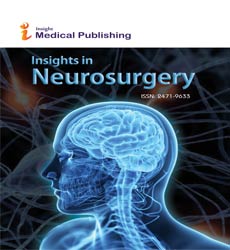Abstract
Neurology Congress 2020: Effect of transcranial direct current stimulation on cerebral blood flow in patients with cerebral palsy - Kateryna Yatsenko - Bogomoletz Institute of Physiology of NAS of Ukraine
Introduction: Transcranial direct current stimulation (tDCS) is a promising non-invasive, easy to handle, and low-cost tool that induces regional changes in neuronal excitability. tDCS is dose-dependent and based on the time of application and electrode arrangement. It has been shown that the most common stimulation by direct current across the anode leads to a neuronal depolarization and cathodic stimulation facilitates neuronal inhibition by hyper-polarization.
Although many studies have demonstrated the efficacy of transcranial direct current stimulation in cerebral palsy (CP), the literature regarding the effects of tDCS on cerebral blood flow in patients with CP is more limited.
It is known that neurovascular coupling helps maintain the balance between neuronal activity and subsequent constriction/dilation of brain micro vessels.
We propose that there is a possible positive effect of transcranial direct current stimulation on cerebral blood flow (CBF), as neurons are spatially and temporally related to blood vessels.
Thus, the aim of the study was to investigate effects of tDCS on cerebral blood flow in patients with cerebral palsy.
Keywords: Transcranial Direct Current Stimulation, Cerebral Palsy, Transcranial Doppler.
Materials and Methods: 60 children aged 2 to 12 years with various forms of cerebral palsy were examined and treated at the "Neurological Clinic of Dr. Yatsenko" (Kyiv). The children were randomly assigned to one of two groups according to their main parameters (gender and age). The comparison group was formed from 30 children who received the course of basic medical and rehabilitation procedures: Kinesio tape; biomechanical muscle stimulation; pedagogical correction and speech therapy; massage and physical training. The main group included 30 children who, in addition to the same therapy, received a course of transcranial direct current stimulation. Transcranial direct current stimulation was performed using a certified current device "Reamed-Polaris". The electrodes were placed on the scalp according to the developed individual treatment regimens depending on the location of the pathology. The course of treatment consisted of 40-minute daily sessions during 10 days.
A transcranial Doppler ultrasound examination of cerebral vessels was used for the study of cerebral hemodynamics in children with cerebral palsy before and after combined treatment with tDCS. The main cerebral vessels were analyzed: the middle cerebral arteries (MCA), anterior cerebral artery (ACA) and basilar artery (BA). We analyzed the peak systolic velocity, end diastolic velocity and mean blood flow velocity per cycle (MFV) to assess cerebral hemodynamics and circulatory status in the main cerebral arteries.
Results: The results of transcranial Doppler ultrasound examination of cerebral vessels of children with cerebral palsy, both groups of observations showed the presence of pathology of cerebral hemodynamics of varying degrees. Almost all patients with cerebral palsy noted certain disorders of blood flow in the main cerebral arteries: hemodynamically significant (more than 15%) asymmetry of blood circulation in the middle and anterior cerebral arteries; high blood flow velocity in basilar artery, MCA and ACA; low blood flow velocities in basilar artery, MCA and ACA, etc. The data of the transcranial Doppler ultrasound examination showed that children with cerebral palsy of both groups under the influence of tDCS mostly had favorable changes in cerebral hemodynamics. Positive changes in cerebral blood flow were observed in 87 % of patients in the main group and in 52 % of children in the comparison group. tDCS reduced asymmetry coefficient of blood flow velocity in the middle cerebral arteries (MCA) by 12.3%, whereas in the comparison group only by 2.5%; in the anterior cerebral artery (ACA) - 9.5%, while in the comparison group - 0.8%. tDCS significantly reduced the high mean blood flow velocity per cycle (MFV) in the basilar artery (BA), MCA and ACA (21.7%, 18.3% and 7.8%, respectively); in the comparison group no statistically significant positive dynamics was observed. tDCS significantly increased the low MVF in the BA, MCA and ACA (29.7%, 21.2% and 9.7%, respectively); a statistically significant increase of MVF by 9.9% was only in the CMA in the comparison group of patients.
Conclusions: Our data indicate that the use of tDCS in the combined treatment of CP patients improves cerebral hemodynamics in 87% of patients, in contrast to 52% in the comparison group. Including the method of transcranial direct current stimulation to the complex treatment of patients with cerebral palsy improves the effectiveness of treatment and may also positively influence the clinical course of the disease.
References:
1. Biabani M, Aminitehrani M, Zoghi M, Farrell M, Egan G and Jaberzadeh S.(2017) The effects of transcranial direct current stimulation on shortinterval intracortical inhibition and intracortical facilitation: a systematic review and meta-analysis. Rev Neurosci. 29:99–114.
2. Fleming MK, Theologis T, Buckingham R and Johansen-Berg H (2018) Transcranial direct current stimulation for promoting motor function in cerebral palsy: a review. J Neuroeng Rehabil.15 (1):121.
3. Hawkins BT and Davis TP (2005) The blood-brain barrier/neurovascular unit in health and disease. Pharmacol Reviews 57(2):173–185.
Author(s):
Kateryna Yatsenko
Abstract | PDF
Share this

Google scholar citation report
Citations : 31
Insights in Neurosurgery received 31 citations as per google scholar report
Abstracted/Indexed in
- Google Scholar
- Directory of Research Journal Indexing (DRJI)
- WorldCat
- Secret Search Engine Labs
Open Access Journals
- Aquaculture & Veterinary Science
- Chemistry & Chemical Sciences
- Clinical Sciences
- Engineering
- General Science
- Genetics & Molecular Biology
- Health Care & Nursing
- Immunology & Microbiology
- Materials Science
- Mathematics & Physics
- Medical Sciences
- Neurology & Psychiatry
- Oncology & Cancer Science
- Pharmaceutical Sciences
